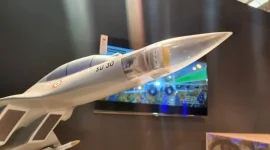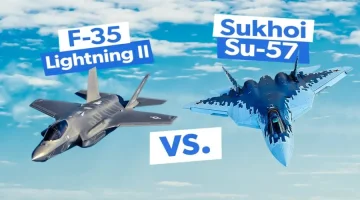- Views: 2K
- Replies: 17

The Indian Air Force's (IAF) successful test of the Astra Beyond Visual Range (BVR) air-to-air missile in a networked mode represents a major milestone in India's air combat capabilities.
This capability, demonstrated with two LCA Tejas fighters, allows one aircraft to detect and track a target, while another, in silent mode, launches the Astra missile based on shared targeting data. This achievement heralds a significant leap in the IAF's operational tactics and electronic warfare capabilities.
Network-Centric Warfare and Enhanced Stealth
The networked mode of the Astra missile showcases the IAF's embrace of network-centric warfare. This tactic, where one aircraft acts as a sensor and another as the shooter, greatly improves the IAF's ability to conduct surprise attacks.The launching aircraft can remain undetected by enemy radar systems, as it doesn't need to activate its own radar to acquire the target. In a BVR engagement, maintaining a low radar signature is crucial for survival, especially in contested airspace.
Expanded Operational Envelope and Improved Survivability
The ability to launch missiles in a networked mode significantly enhances the survivability and effectiveness of the IAF's fighter fleet. This tactic allows a fighter jet to engage targets beyond its own radar range, relying on data from other platforms like AEW&C systems or ground-based radars.The capability to share real-time data and engage in coordinated attacks expands the IAF's operational envelope and makes it more difficult for adversaries to defend against such tactics.
Secure Communication and Flexible Operations
The use of Software-Defined Radios (SDRs) for secure data transmission ensures that communication links remain resilient against jamming and electronic countermeasures. This robust communication framework is essential for successful multi-platform operations, enabling the IAF to maximize the combat potential of its assets.Furthermore, the Astra's networked mode enables a more flexible and dynamic approach in future conflicts, particularly in scenarios where stealth and surprise are paramount. The ability to silently engage enemies from afar without revealing the attacker's presence could prove decisive in achieving air superiority.
In conclusion, the successful test of the Astra BVR missile in a networked mode represents a significant advancement for the IAF. It not only enhances the IAF's electronic warfare capabilities but also introduces new operational tactics that could prove decisive in future conflicts. The IAF's continued investment in developing and integrating such advanced technologies is a clear indication of maintaining a cutting-edge air combat force.


